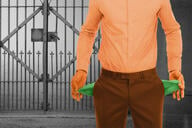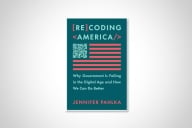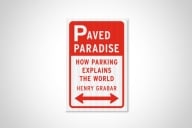You have /5 articles left.
Sign up for a free account or log in.
The Boy has his mother's spatial sense and a touch of my nerdiness, so he was all over the science fair.
He loves bridges and earthquakes, so this year he decided to do a project that combined them. His project involved building bridges of two different designs -- 'beam' and 'suspension' -- and subjecting both of them to simulated earthquakes while supporting weight. The idea was to see whether one design would hold up better than the other.
It takes a village to do a science fair project.
First was the design phase. Both bridges feature two vertical supports and a 'road' that connects them, all made of wood. The suspension bridge includes additional vertical supports holding up the twine arches on either side. From each twine arch, he hung strings that went under the road and connected to the twine arch on the other side. His hypothesis was that the additional support would help the suspension bridge hold up better.
The "shake table" was the cool part. TW took TB to Home Depot, where I think we should get the frequent-customer discount by now, and got two 2 foot by 2 foot squares of wood and two huge rubber bands. She took four rubber balls, about an inch in diameter, from one of TG's old games, put them between the squares, and held the sandwich together with the rubber bands. Once the sandwich was assembled, you could simulate an earthquake by pulling the top layer an inch or two toward you, and letting go. It's basically a slingshot effect. The idea was to put each bridge on the shake table in sequence, and to see at what weight each would break while moving.
Then came the test phase. Experienced parents can guess what happened here.
Balsa wood is a lot stronger than it looks.
Thinking back to the cheesy toy airplanes of my youth, I assumed that a couple of cans of beans would do the job. Not so. Even stacking four cans across and two cans high didn't do it; all that happened was that the top layer went flying when the earthquake hit. Then we tried one-liter water bottles; no dice. We tried books, but they had to be stacked with the title page vertical in order to fit between the strings on the suspension bridge, which made stacking them impossible. (Surprisingly, even my monstrous American Heritage Dictionary couldn't get the job done.)
We didn't have any spare steel weights lying around -- anvils aren't nearly as common as years of cartoons had led me to believe -- so we did the next best thing: call my old high school chemistry lab partner. (He's a named professor of engineering now, so it wasn't quite as silly as it sounds.) He suggested planing the road thinner, which would have made sense if I had a plane and much greater mechanical skills than I actually have. He also mentioned something about a torque wrench, but that fell victim to the same objection. Finally, he suggested putting 'wings' across the road so it could hold larger objects, but TB vetoed that on the grounds that bridges don't have wings.
The kid has a solid grasp on the obvious.
For lack of any better ideas, I resorted to the last gasp of desperate Dads everywhere: let's take it outside! Admittedly, there wasn't a second step to the plan, but I figured that if we had to stack a third level of cans, at least they wouldn't dent the kitchen table when they went airborne.
Luckily, we found a few hunks of brick lying around for no visible reason. A few earthquakes later, victory! The beam bridge collapsed, but the suspension bridge held the same weight. It took three bricks, but we got the job done, and the driveway survived. And through the miracles of digital photography and cheap printers, we could even show each step on the display board.
Happily for us, TW had the foresight to have TB build two of each kind of bridge, so he had unbroken ones to display at the science fair. The display was a hit, and it was fun to see the fashion trend. In past years, volcanoes and "how high can I drop this egg" were huge; this year's trend was food spoilage. Several kids did variations on "which storage unit lets food spoil faster?" Those experiments are elegant in their design, but you don't really want to display spoiled food, so they lose something in translation. At least with construction, you have something to show. (My all-time favorite is still the build-your-own-Zamboni.) The obligatory baking soda volcano was there, but I was glad to see it relegated to the margins.
TB won a ribbon and beamed with pride as he explained his experiment to passersby. We celebrated with ice cream and a gloating call to Grandpa. The Girl was jealous that she couldn't participate -- for reasons unknown, they set the entry at first grade -- but I suspect she'll give him a run for his money next year.
This may not sound like much, but as an academic Dad, this is a clean win. The Boy rocked the science fair, and all is right with the world.



